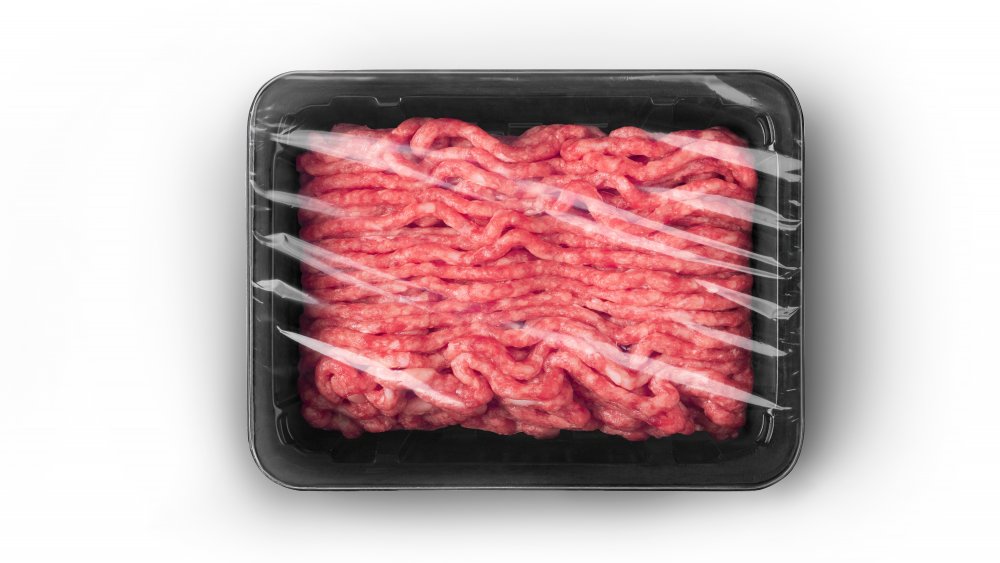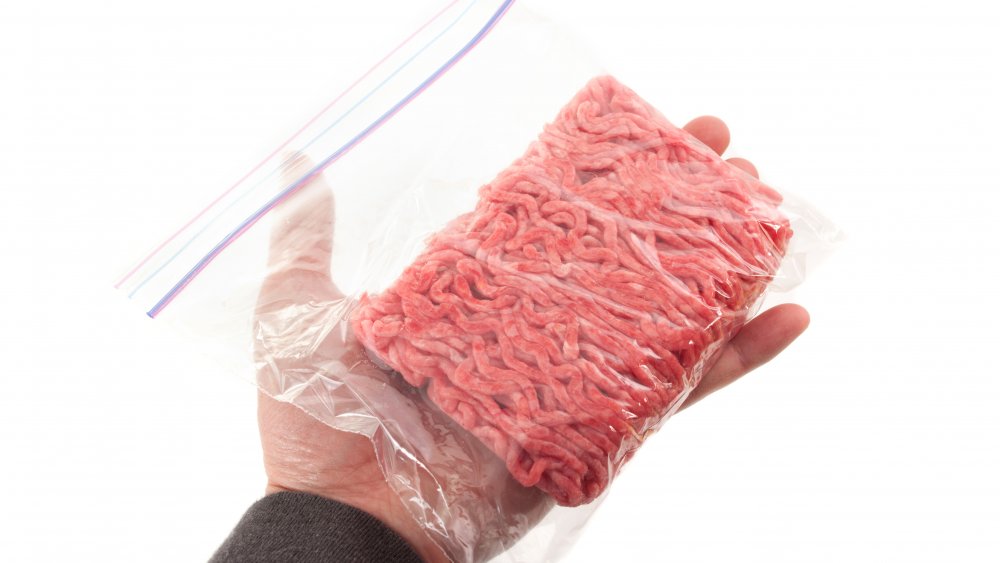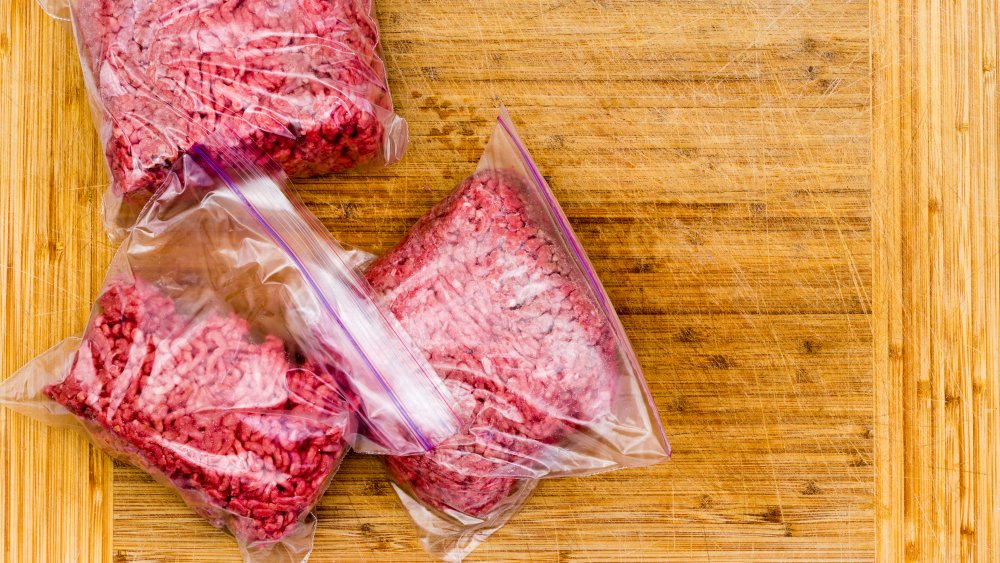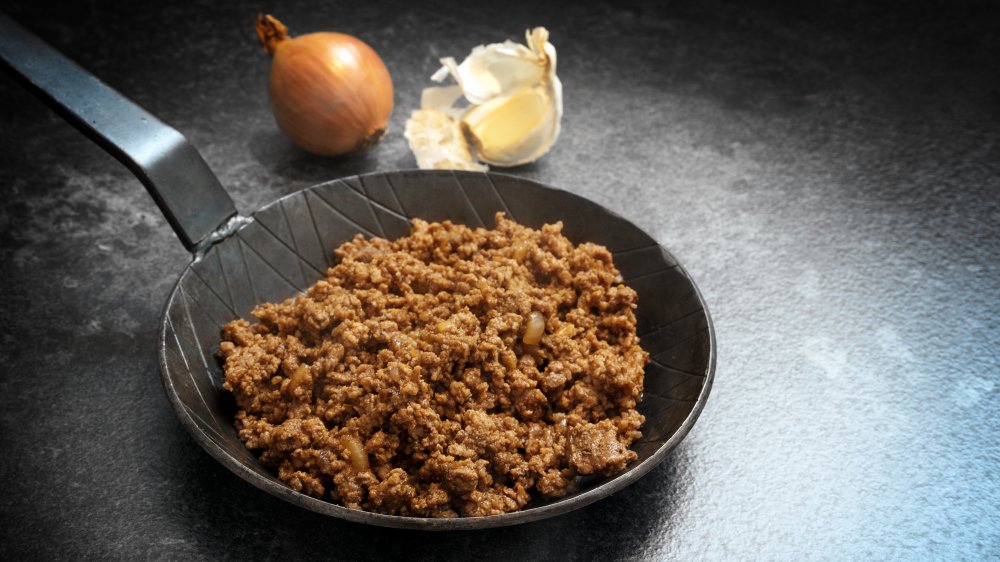You've Been Freezing Ground Beef Wrong Your Whole Life
There are times when you realize you need ground beef for a recipe — but it's frozen solid after sitting in the freezer. And even if you only need a portion, thawing your entire package of ground beef long enough to get some can take forever, and then you're faced with the prospect of needing to prepare it all within a few days because refreezing meat that's already been frozen isn't always the best idea.
But what can you do? The fridge is not a long-term storage solution for ground beef. The USDA's Food Safety and Inspection Service says that refrigerated ground beef should be used within one or two days.
Well, you're in luck, because there's an easy hack that'll solve this problem. The next time you buy raw ground beef, first take it out of its packaging. Then store the meat inside a ziplock freezer bag, but before sealing the bag, press it down with your hands or a rolling pin until it's a rectangle that's about a half-inch thick (via Southern Living).
How to freeze ground beef the right way
Flattening down the ground beef will make it defrost faster later on because of the increased surface area, which will cut down on your meal prep when it comes time to cook your meat. This also removes any air pockets that might lead to freezer burn, which can alter your meat's taste (via Lifehacker). Make sure the bag is tightly sealed after portioning out and then use a permanent marker to label it with the date and what's inside. This will help you keep track of when it was stored.
But you can take this a step further. Portion out the ground beef into separate plastic bags first and then flatten them down before you put it in the freezer. It might take a little more work, but it pays off later when you're cooking. Use a kitchen scale to weigh and divide out the raw meat into sections (the exact amount for each portion is up to what is most useful to you, although creating 1-pound packages might make the most sense, as many recipes call for ground beef in pounds). Label the bag with the total amount of ground beef inside so you know exactly how much you need for a recipe when you take it out later.
An easier way to freeze ground beef
Want something easier and faster to do? You can also store your meat in a larger freezer bag and then take a long chopstick, ruler, or anything with a straight edge to divide up the meat into individual portions. By doing so, even though you're freezing the entire bag, you can just break off the amount that you need later. No need to thaw out the whole thing!
When you want to thaw out a bag of frozen ground beef, place it in the fridge and then leave it to defrost for a few hours, if you have the time. If you're short on time, run cool water over it in the sink. Need it right away? Take out the meat from the bag and microwave it with the "defrost" setting.
Storing your raw ground beef in plastic bags and flattening them helps to save precious freezer space because they can be easily stacked on top of one another. But note that while ground beef kept frozen is safe for an indefinite amount of time, it will eventually start to lose quality. It's best to use it within four months, which is still a fairly long time, especially if you find an awesome deal on ground beef at your local supermarket and want to stock up.
Save time at dinner by freezing cooked ground beef
If you want to take things a step further in the meal prep department, you'll want to cook your ground beef prior to freezing it. The Kitchn recommends cooking your meat and seasoning it with salt and pepper, at a minimum, but there's no reason you can't add taco seasonings for Taco Tuesday, or sautéed onions and garlic for a pot of chili. Once your beef is cooked, drain the fat and let it cool before freezing it in half-pound portions. Again, flattening the meat in a Ziploc bag with all the air pushed out is your best bet to avoid freezer burn.
When you're ready to cook, you don't even need to worry about defrosting. Just drop the meat in the pan or pot, and you're well on your way to dinner.



